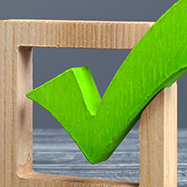EVERY DIVE SHOULD START WITH A {please fill in the correct answer}

A good pre-dive checklist must include all the usual suspects: from being correctly weighted to following a sensible dive plan.
That’s a given and a piece of advice that every diver should follow without fail.
However, a GREAT pre-dive checklist has all that but also includes everyone performing an S-drill before venturing any deeper than five or six metres.
So, if you included S-Drill or Safety Drill in your answer, you win. Congratulations.
Most RAID-trained divers know that an S-Drill is an essential pre-dive skill that confirms everyone in the dive team can safely and quickly hand-off a working second stage (and the breathing gas it delivers) to a diver who is out of gas — simulated or real.
The exercise — completed in a few moments and more than worth the small time investment it takes — certainly makes sure that gas can be shared with a buddy cleanly and quickly in a time of stress. It also confirms that backup regulator hoses are free and untangled, and not caught in other peices of equipment. A properly performed S-Drill has the added advantage of checking equipment is bubble-free (no leaks), and that every diver in the team have no issue maintaining buoyancy control and trim while the skill is performed. (Which in turn confirms there are no issues with BCDs or wings.)
Once something only cave divers bothered to do, at RAID, the S-Drill is considered an essential skill for every diver (except freedivers). It’s appropriate for all diving environments, and for divers planning to take their adventures to every depth.
The take-home message, RAID certified diver or not, please make sure you include an S-Drill in your pre-dive checks every time you dive.
Watch the videos linked to below for tips and demonstrations of standards open water S-Drills.


